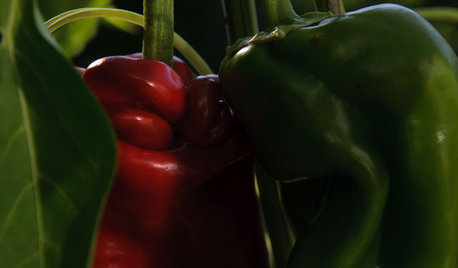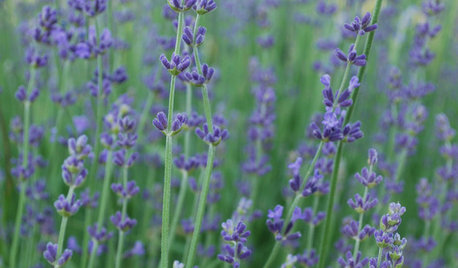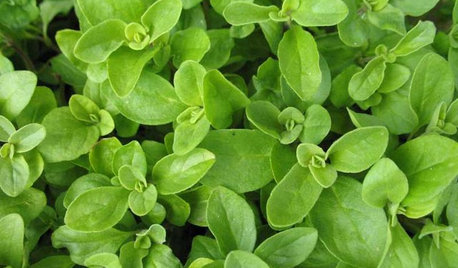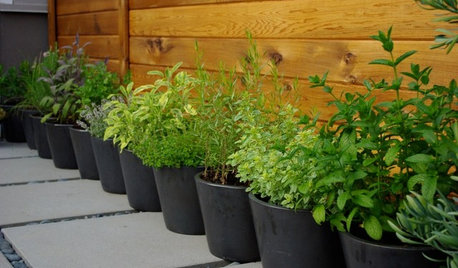Hi Everyone!
In response to Sherri's request, here's some tips for growing peppers in Oklahoma.
1. Prepare your soil. Peppers grow best in soil with a pH of 5.5 to 7.5. They like rich, loamy soil and abhor wet feet, so plant in raised beds or on raised furrows in the soil if you don't have raised beds. Add manure to your pepper beds at the rate of about 50 pounds per 100 square feet of growing space. Or, you can use any vegetable fertilizer at the rate of about 2 to 2.5 lbs. per 100 square feet of bed.
2. Start with transplants. Sowing seed in the soil will mean that the peppers are ready to bloom and form fruit when temps are so high that they can't bloom and set fruit. Peppers raised from seed sown in the ground generally won't produce ripe peppers until fall.
3. Transplant about 7 to 10 days after your last spring frost date. (Tomato transplants go into the ground right at the last frost date.) If you plant pepper plants in the ground while they still might be exposed to air temps in the low 40s, the plants will be stunted and will not produce well. To check the soil and be sure it is warm enough for the plants, check the soil temps with a soil thermometer 2" below the soil surface and only plant after you get readings of 55 degrees for at least 3 consecutive days.
4. Transplant into moist but not soggy soil. Plant them at the same depth in the soil as they were planted in the pots. Unlike tomatoes, peppers do not benefit from deeper planting and it will stunt their growth. Peppers tend to wilt easily as a result of being transplanted, so I like to set them out in the beds on cloudy days or in the evening. I also will water the bed a couple of days BEFORE I set out the beds. Then I will water the plants in their little pots before I put them in the ground. Once I get them in the ground, I water them in gently with water from a watering can to help the soil settle firmly around their roots.
5. Grow them in full sun. Peppers in less than full sun will give you less than great production.
6. Support them. Pepper plants are much more brittle than tomato plants and limbs break off easily. I like to stake them while young AND put a small (2' tall) cage around them. In our rural location, these little cages also help protect my plants from all the possums, skunks, raccoons, armadillos, etc. that like to find their way into the garden and wreak havoc. Also, sometimes plants are so heavily laden that limbs will droop and touch the ground, which can cause peppers touching the ground to rot. Staking and caging the pepper plants helps avoid this.
7. I like to space my pepper plants 18" to 24" apart. You can put them a little closer together, but your yields will be reduced.
8. Healthy transplants set out at the right time ought to begin blooming within 2 to 4 weeks of being set out in the garden. Some people like to side-dress their peppers (when the first blooms appear) with either a good organic vegetable fertilizer or a high-nitrogen fertilizer like ammonium sultrate (21-0-0), applied at the rate of 1 cup per each 35 foot row of plants. If you use a higher-nitrogen fertilizer like ammonium nitrate (33-0-0), use only 2/3s of a cup for that 35-foot row. Spread the fertilizer down both sides of the row in a band about a foot the plants' bases.
9. Add mulch after side dressing. The reason you wait a while and don't mulch immediately upon planting the peppers is that the soil is still sort of cool, and mulch would keep it cool. Letting the plants sit there a few weeks without mulch helps the soil warm up and encourages good plant growth.
10. Peppers like adequate moisture, but not wet feet. I use a soaker hose and try to keep the soil evenly moist but never soggy. It is time to water when the soil is dry 1" below the soil surface.
The worst problems you will face with peppers are plant viruses that cause twisting and stunting of the foliage. Pull up and dispose of such plants as soon as you are sure that is the problem so the disease doesn't spread to other plants.
The most serious problem I usually encounter is fruits that do not have enough foliage above them to completely shade the peppers. Peppers tend to sunscald and burn easily. If I see peppers are in danger of blistering or burning, I will use a double sheet of newspaper and clothespins to clip a sunshade over the pepper pod as protection from the sun
OK, those are my pepper growing tips. I hope the rest of you will add yours.
Dawn













sheri_nwok
Okiedawn OK Zone 7Original Author
Related Discussions
Pepper leafs curling
Q
Wrong pepper seeds
Q
Using peat?
Q
growing tips of pepper plants drying, sickly....?
Q
sammy zone 7 Tulsa
Okiedawn OK Zone 7Original Author
m_gholson_cox_net